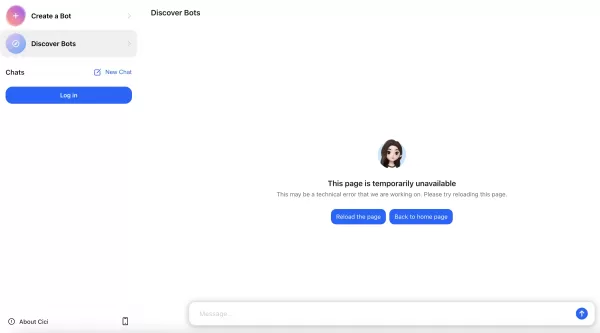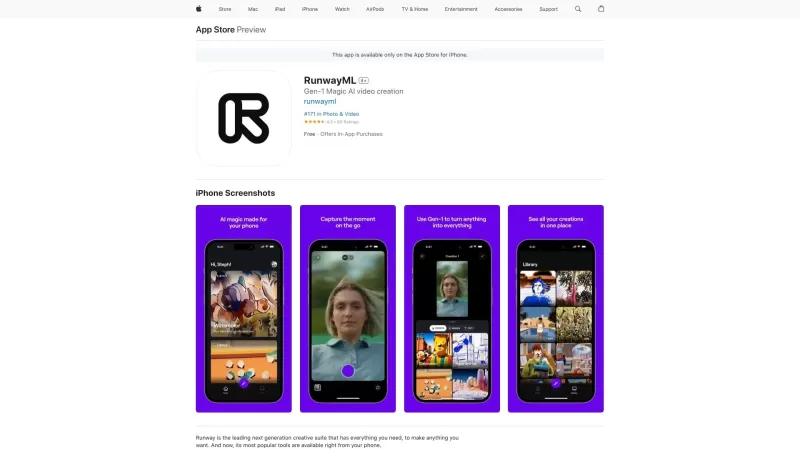Dire Wolf Revived: Dallas Company Successfully 'De-Extincts' Species
If you're fascinated by the idea of bringing extinct species back to life, you're in for a treat. Colossal Biosciences, a Dallas-based company, has just announced a groundbreaking achievement: they've successfully de-extincted the dire wolf. Yes, you heard that right—the dire wolf, once thought to be a myth popularized by "Game of Thrones," is now a reality again, having been extinct for over 12,500 years. I had the chance to speak with the company's leaders, who were set to make this announcement tomorrow, but *The New Yorker* beat them to the punch.
The birth of three dire wolves is not just a cool headline—it's a monumental leap in scientific advancement. Colossal's de-extinction technology has now been proven effective, paving the way for similar efforts with other extinct species. It's like something straight out of a sci-fi movie, isn't it? But it's real, and it's happening now.
But that's not all. Colossal has also successfully cloned two litters of red wolves, the world's most critically endangered wolf, using a new, non-invasive blood cloning method. This achievement not only showcases their de-extinction capabilities but also their commitment to global conservation efforts. And just recently, they introduced the Colossal woolly mouse, which set a record for the number of unique germline edits in an animal.
With the dire wolves, Colossal made 20 unique precision germline edits, including 15 edits from ancient gene variants that haven't existed for over 12,000 years. This sets a new standard for precision germline editing in any animal. It's truly mind-blowing to think about.
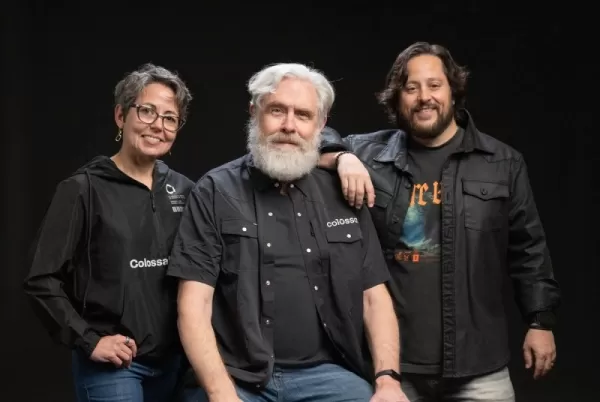
Ben Lamm, CEO of Colossal, couldn't be prouder of his team. "This massive milestone is the first of many, demonstrating that our end-to-end de-extinction technology stack works," he said. They used DNA from a 13,000-year-old tooth and a 72,000-year-old skull to bring these healthy dire wolf puppies back to life. It's like magic, and as Lamm put it, "Today, our team gets to unveil some of the magic they are working on and its broader impact on conservation."
When Lamm showed the dire wolves to George R.R. Martin, the author of "A Song of Ice and Fire," Martin was moved to tears. It's a testament to the emotional impact of this scientific breakthrough. Colossal is also working on bringing back the woolly mammoth, the dodo, and the thylacine.
The two litters of dire wolves include two adolescent males named Romulus and Remus, and a female puppy named Khaleesi, after the iconic "Game of Thrones" character. The red wolves include one adolescent female named Hope and three male puppies named Blaze, Cinder, and Ash, from three different genetic founder lines.
George Church, a Harvard geneticist and co-founder of Colossal, emphasized the importance of preserving genetic diversity. "Preserving, expanding, and testing genetic diversity should be done well before important endangered animal species like the red wolf are lost," he said. The dire wolf project showcases the potential of new technologies like deep ancient DNA sequencing and multiplex germline editing to revive lost genes.
The wolves are thriving in a secure ecological preserve spanning over 2,000 acres, certified by the American Humane Society and registered with the USDA. Colossal employs ten full-time animal care staff to ensure the wolves' well-being, and the preserve includes specialized zones and habitats, all enclosed by zoo-grade fencing with robust security measures. The wolves are continuously monitored through live cameras, security personnel, and drone tracking, with a smaller, six-acre site dedicated to their care and study.
Robin Ganzert, CEO of the American Humane Society, praised Colossal's commitment to animal welfare. "Colossal has achieved American Humane Society Certification, ensuring excellence in animal welfare and care," she said. "Their technology may be the key to reversing the sixth mass extinction."
Colossal's long-term goal is to restore these species in expansive ecological preserves on indigenous land, ensuring lifetime care and monitoring to prepare them for larger protected facilities.

MHA Nation Tribal Chairman Mark Fox highlighted the cultural and spiritual significance of the dire wolf's return. "The dire wolf carries the echoes of our ancestors, their wisdom, and their connection to the wild," he said. "It's a reminder of our responsibility as stewards of the Earth."
An Overview of Dire Wolves
Dire wolves (Aenocyon dirus) roamed the American midcontinent during the Pleistocene ice ages. The oldest confirmed fossil, from Black Hills, SD, is about 250,000 years old, but Colossal's data suggests they first appeared between 3.5 and 2.5 million years ago. These wolves were 25% larger than gray wolves, with a wider head, thick fur, and a strong jaw. As hyper-carnivores, their diet was at least 70% meat, primarily from horses and bison. They went extinct around 13,000 years ago at the end of the last ice age.
Rick McIntyre, a renowned wolf behavior expert and Colossal Conservation Advisory Board Member, shared his excitement. "I never thought I might live in a time when we have the science to bring back those species and restore them to selected sections of their former homeland," he said. He dreams of studying the behavior of dire wolves in the wild someday.
For many, the dire wolf is a mythical creature known from popular culture, like "Game of Thrones" and "Dungeons & Dragons." George R.R. Martin, an investor and cultural advisor for Colossal, expressed his awe. "Ben and Colossal have created magic by bringing these majestic beasts back to our world," he said.
The Science Behind the Return of the Dire Wolf
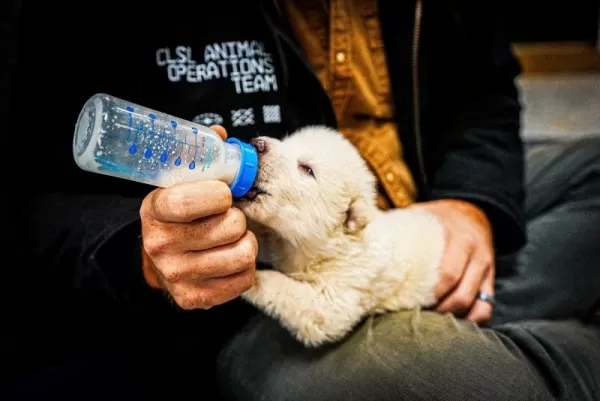
The birth of the dire wolf pups showcases the effectiveness of Colossal's de-extinction protocols. They performed 20 precise genetic edits, with 15 being extinct variants, contributing to the wolves' larger, stronger bodies and their long, full, light-colored coats.
To bring back the dire wolf, Colossal:
- Extracted and sequenced ancient DNA from two dire wolf fossils;
- Assembled ancient genomes and compared them to living canids;
- Identified gene variants specific to dire wolves;
- Determined that dire wolves had a white coat color and long, thick fur;
- Performed multiplex gene editing on a gray wolf genome, resulting in 20 edits in 14 genes;
- Screened edited cell lines via whole genome sequencing and karyotyping;
- Cloned high-quality cell lines using somatic cell nuclear transfer;
- Performed embryo transfer and managed interspecies surrogacy;
- Successfully birthed an extinct species.
Colossal's analysis revealed that the gray wolf is the dire wolf's closest living relative, sharing 99.5% of their DNA. The dire wolf lineage emerged from hybridization between two ancient canid lineages, explaining previous uncertainties about their origin.
Beth Shapiro, Colossal's chief science officer, emphasized the significance of their approach. "Our novel approach to iteratively improve our ancient genome in the absence of a perfect reference sets a new standard for paleogenome reconstruction," she said. The team identified key variants in dire wolves, including those linked to skeletal, muscular, circulatory, and sensory adaptations, as well as pigmentation genes indicating a white coat.
Colossal's dire wolf team used gray wolves as the donor species for cell lines, performing multiplex genome editing and confirming the edits' efficiency. Healthy embryos were transferred into surrogates for interspecies gestation, leading to the birth of the first de-extinct species.
Christopher Mason, a scientific advisor for Colossal, highlighted the broader impact of this technology. "The same technologies that created the dire wolf can directly help save a variety of other endangered animals," he said. The targeted genes included those linked to coat color and body size, ensuring the dire wolves expressed traits unique to their species.
The project also led to innovations in ancient DNA genome reconstruction, genotype-to-phenotype prediction, and multiplex gene editing. Colossal's protocols for establishing cell lines directly from blood provide a valuable tool for cloning and preserving genetic diversity in threatened or endangered wolf populations.
A Leap Forward for Red Wolf Recovery
The technology developed for the dire wolf has immediate applications for global conservation efforts, including the birth of two litters of red wolves. Colossal's red wolves, including one female and three males from three different cell lines, were born after somatic cell nuclear transfer and embryo transfer into a surrogate mother.
Bridgett von Holdt, a Princeton associate professor, praised the impact of these technologies. "We now have the technology that can edit DNA to increase resilience in species facing extinction," she said. The red wolf, listed as critically endangered with fewer than 20 individuals remaining in North America, could benefit greatly from these advancements.
The dire wolf project has also supported research on the red 'ghost' wolf, unique canids along the Gulf Coast of Texas and Louisiana. Researchers are studying how red wolf ancestry shapes morphology and behavior, with Colossal's support accelerating their efforts.
Mike Phillips, Director of the Turner Endangered Species Fund, applauded Colossal's innovative steps. "Perfecting genomic tools to integrate 'ghost alleles' from Gulf Coast canids would increase red wolf genetic diversity," he said, emphasizing the potential for recovering other imperiled species.
From Conservation to Rewilding
Colossal's long-term goal is to rewild their red wolves through US conservation efforts in collaboration with the government. Matt James, Colossal's Chief Animal Officer, sees the dire wolf's de-extinction as a massive coup for conservation. "The technologies developed on the path to the dire wolf are already opening up new opportunities to rescue critically endangered canids," he said.
Barney Long, Senior Director of Conservation Strategy for Re:Wild, highlighted the potential of these genetic technologies. "From restoring lost genes into small, inbred populations to inserting disease resistance into imperiled species, the genetic technologies being developed by Colossal have immense potential to greatly speed up the recovery of species on the brink of extinction," he said.
Colossal will provide more information on the rescue of the red wolf and restoration of the dire wolf in the coming months, following extensive feasibility studies and monitoring.
Dan Flores, a professor emeritus, expressed his excitement about the potential for rewilding. "The idea of being able to have dire wolves again is tremendously, personally exciting," he said. "It gives me hope that we're very likely to have animals once again that we thought were always gone."
Partnerships
Colossal's efforts to de-extinct the dire wolf, rescue the red wolf, and support gray wolf conservation are made possible through collaborations with Indigenous communities, conservation organizations, and scientific experts. They extend their gratitude to the MHA Nation, the Nez Perce Tribe, the Karankawa Tribe of Texas, and others for their ancestral knowledge and insights.
Founded by Ben Lamm and George Church, Colossal is the first to apply CRISPR technology for species de-extinction. They are committed to restoring Earth's ecosystems and protecting critically endangered species. For more information, visit www.colossal.com.
Update: 4/8/25 4:57 p.m. Pacific time:
Some observers have questioned whether the animal in question is a dire wolf or a type of dog. Here's Colossal's response:
Statement
We understand that some scientists are not comfortable calling these dire wolves because they feel like the wolves are not sufficiently genetically similar to an extinct individual to merit that name. That's ok with us. We can disagree about what makes a dire wolf qualify as a dire wolf, or what makes a mammoth qualify as a mammoth.
Colossal has 500 times more data than anyone has ever had on a dire wolf. We have had a small army of people doing comparative genomics to wolves and other canids for the last 18 months with this proprietary data set. We know what makes a dire wolf a dire wolf, including that it is not closer to a jackal. We will be submitting that data next week for peer review. Colossal has always said that we are doing functional de-extinction where we are looking to de-extinct the core genes that make a species a species as it relates to their phenotypes or physical attributes.
All animals on this planet are admixtures. Just like a polar bear is a white adaptive bear compared to a brown bear, a dire wolf is a plasticine wolf when compared to a grey wolf – it is 20% to 25% larger, has more muscle mass, an arctic white coat, is stronger and bigger, and has a different cranial facial structure. We have identified the genes that drive those phenotypes and de-extincted them as we are doing on all our projects.
The scientific community does not agree on how to classify species because it is a man-made construct that does not apply to nature, and that is why there are so many variants of it. Under several of the variants, the dire wolf would be classified as a dire wolf. We are calling it a dire wolf because it is a dire wolf. If you do not want to call it a dire wolf, you can always call it Colossal's dire wolf.
Related article
 Bankbull TradePro AI Enhances Trading Accuracy with Backtesting Feature
In today's fast-paced stock trading environment, precision execution makes all the difference. This in-depth analysis examines Bankbull TradePro AI's real-world performance through rigorous backtesting - revealing how this specialized indicator enhan
Bankbull TradePro AI Enhances Trading Accuracy with Backtesting Feature
In today's fast-paced stock trading environment, precision execution makes all the difference. This in-depth analysis examines Bankbull TradePro AI's real-world performance through rigorous backtesting - revealing how this specialized indicator enhan
 "Desi Vocal: AI-Powered Voice Generator Creates Engaging Audio Content for Free"
In today's content-driven digital ecosystem, compelling audio can make all the difference. Desi Vocal revolutionizes voice-over creation with its free, AI-powered text-to-speech technology, enabling anyone to produce studio-quality narration without
"Desi Vocal: AI-Powered Voice Generator Creates Engaging Audio Content for Free"
In today's content-driven digital ecosystem, compelling audio can make all the difference. Desi Vocal revolutionizes voice-over creation with its free, AI-powered text-to-speech technology, enabling anyone to produce studio-quality narration without
 Google Relaunches AI-Powered 'Ask Photos' with Improved Speed Features
Following a temporary halt in testing, Google is relaunching its AI-driven "Ask Photos" search functionality in Google Photos with significant enhancements. Powered by Google's Gemini AI technology, this innovative feature helps users locate specific
Comments (16)
0/200
Google Relaunches AI-Powered 'Ask Photos' with Improved Speed Features
Following a temporary halt in testing, Google is relaunching its AI-driven "Ask Photos" search functionality in Google Photos with significant enhancements. Powered by Google's Gemini AI technology, this innovative feature helps users locate specific
Comments (16)
0/200
![KevinJohnson]() KevinJohnson
KevinJohnson
 August 20, 2025 at 11:01:15 PM EDT
August 20, 2025 at 11:01:15 PM EDT
Whoa, bringing back dire wolves sounds like something straight out of a sci-fi flick! 🐺 I’m kinda torn—super cool to see ancient creatures return, but are we sure we can handle them roaming around? What’s next, Jurassic Park vibes?


 0
0
![HaroldLopez]() HaroldLopez
HaroldLopez
 April 26, 2025 at 6:08:54 AM EDT
April 26, 2025 at 6:08:54 AM EDT
멸종한 디어 울프가 부활하다니, 믿기지 않아! 콜로설 바이오사이언스가 해냈네. 자연에 미칠 영향이 걱정되지만, 정말 멋진 일이야. 다음에 어떤 생물이 부활할지 기대돼! 🐺🌿


 0
0
![DennisMartinez]() DennisMartinez
DennisMartinez
 April 25, 2025 at 9:41:15 PM EDT
April 25, 2025 at 9:41:15 PM EDT
Bringing back the dire wolf? That's wild! Colossal Biosciences really did it, huh? I'm excited but also a bit scared about what this means for nature. Still, it's amazing to think we could see these creatures again. Can't wait to see what they bring back next! 🐺🌿


 0
0
![FrankGonzález]() FrankGonzález
FrankGonzález
 April 25, 2025 at 7:37:08 PM EDT
April 25, 2025 at 7:37:08 PM EDT
डायर वुल्फ को वापस लाना? यह तो पागलपन है! मैं बहुत उत्साहित हूँ लेकिन थोड़ा संदेह भी है। यह किसी साइंस फिक्शन फिल्म जैसा लगता है। आशा है कि वे इसे नियंत्रण में रख सकें और यह जुरासिक पार्क जैसी स्थिति न बन जाए। 🦴


 0
0
![LarryMartin]() LarryMartin
LarryMartin
 April 25, 2025 at 2:49:32 PM EDT
April 25, 2025 at 2:49:32 PM EDT
디레울프를 부활시키다니, 정말 대단해! 신나지만 조금 회의적이야. SF 영화 같아. 주라기 공원 같은 상황이 되지 않도록 잘 관리했으면 좋겠어. 🦴


 0
0
![RyanLewis]() RyanLewis
RyanLewis
 April 25, 2025 at 8:10:54 AM EDT
April 25, 2025 at 8:10:54 AM EDT
डायर वुल्फ को वापस लाना? यह तो बहुत ही वाहियात है! कोलोसल बायोसाइंसेज ने वाकई में यह किया है? मैं उत्साहित हूँ लेकिन प्रकृति पर इसका क्या असर होगा इससे भी थोड़ा डर रहा हूँ। फिर भी, इन जीवों को फिर से देखने की सोच ही अद्भुत है। अगली बार वे क्या वापस लाएंगे, इसका इंतजार नहीं कर सकता! 🐺🌿


 0
0
If you're fascinated by the idea of bringing extinct species back to life, you're in for a treat. Colossal Biosciences, a Dallas-based company, has just announced a groundbreaking achievement: they've successfully de-extincted the dire wolf. Yes, you heard that right—the dire wolf, once thought to be a myth popularized by "Game of Thrones," is now a reality again, having been extinct for over 12,500 years. I had the chance to speak with the company's leaders, who were set to make this announcement tomorrow, but *The New Yorker* beat them to the punch.
The birth of three dire wolves is not just a cool headline—it's a monumental leap in scientific advancement. Colossal's de-extinction technology has now been proven effective, paving the way for similar efforts with other extinct species. It's like something straight out of a sci-fi movie, isn't it? But it's real, and it's happening now.
But that's not all. Colossal has also successfully cloned two litters of red wolves, the world's most critically endangered wolf, using a new, non-invasive blood cloning method. This achievement not only showcases their de-extinction capabilities but also their commitment to global conservation efforts. And just recently, they introduced the Colossal woolly mouse, which set a record for the number of unique germline edits in an animal.
With the dire wolves, Colossal made 20 unique precision germline edits, including 15 edits from ancient gene variants that haven't existed for over 12,000 years. This sets a new standard for precision germline editing in any animal. It's truly mind-blowing to think about.

Ben Lamm, CEO of Colossal, couldn't be prouder of his team. "This massive milestone is the first of many, demonstrating that our end-to-end de-extinction technology stack works," he said. They used DNA from a 13,000-year-old tooth and a 72,000-year-old skull to bring these healthy dire wolf puppies back to life. It's like magic, and as Lamm put it, "Today, our team gets to unveil some of the magic they are working on and its broader impact on conservation."
When Lamm showed the dire wolves to George R.R. Martin, the author of "A Song of Ice and Fire," Martin was moved to tears. It's a testament to the emotional impact of this scientific breakthrough. Colossal is also working on bringing back the woolly mammoth, the dodo, and the thylacine.
The two litters of dire wolves include two adolescent males named Romulus and Remus, and a female puppy named Khaleesi, after the iconic "Game of Thrones" character. The red wolves include one adolescent female named Hope and three male puppies named Blaze, Cinder, and Ash, from three different genetic founder lines.
George Church, a Harvard geneticist and co-founder of Colossal, emphasized the importance of preserving genetic diversity. "Preserving, expanding, and testing genetic diversity should be done well before important endangered animal species like the red wolf are lost," he said. The dire wolf project showcases the potential of new technologies like deep ancient DNA sequencing and multiplex germline editing to revive lost genes.
The wolves are thriving in a secure ecological preserve spanning over 2,000 acres, certified by the American Humane Society and registered with the USDA. Colossal employs ten full-time animal care staff to ensure the wolves' well-being, and the preserve includes specialized zones and habitats, all enclosed by zoo-grade fencing with robust security measures. The wolves are continuously monitored through live cameras, security personnel, and drone tracking, with a smaller, six-acre site dedicated to their care and study.
Robin Ganzert, CEO of the American Humane Society, praised Colossal's commitment to animal welfare. "Colossal has achieved American Humane Society Certification, ensuring excellence in animal welfare and care," she said. "Their technology may be the key to reversing the sixth mass extinction."
Colossal's long-term goal is to restore these species in expansive ecological preserves on indigenous land, ensuring lifetime care and monitoring to prepare them for larger protected facilities.

MHA Nation Tribal Chairman Mark Fox highlighted the cultural and spiritual significance of the dire wolf's return. "The dire wolf carries the echoes of our ancestors, their wisdom, and their connection to the wild," he said. "It's a reminder of our responsibility as stewards of the Earth."
An Overview of Dire Wolves
Dire wolves (Aenocyon dirus) roamed the American midcontinent during the Pleistocene ice ages. The oldest confirmed fossil, from Black Hills, SD, is about 250,000 years old, but Colossal's data suggests they first appeared between 3.5 and 2.5 million years ago. These wolves were 25% larger than gray wolves, with a wider head, thick fur, and a strong jaw. As hyper-carnivores, their diet was at least 70% meat, primarily from horses and bison. They went extinct around 13,000 years ago at the end of the last ice age.
Rick McIntyre, a renowned wolf behavior expert and Colossal Conservation Advisory Board Member, shared his excitement. "I never thought I might live in a time when we have the science to bring back those species and restore them to selected sections of their former homeland," he said. He dreams of studying the behavior of dire wolves in the wild someday.
For many, the dire wolf is a mythical creature known from popular culture, like "Game of Thrones" and "Dungeons & Dragons." George R.R. Martin, an investor and cultural advisor for Colossal, expressed his awe. "Ben and Colossal have created magic by bringing these majestic beasts back to our world," he said.
The Science Behind the Return of the Dire Wolf

The birth of the dire wolf pups showcases the effectiveness of Colossal's de-extinction protocols. They performed 20 precise genetic edits, with 15 being extinct variants, contributing to the wolves' larger, stronger bodies and their long, full, light-colored coats.
To bring back the dire wolf, Colossal:
- Extracted and sequenced ancient DNA from two dire wolf fossils;
- Assembled ancient genomes and compared them to living canids;
- Identified gene variants specific to dire wolves;
- Determined that dire wolves had a white coat color and long, thick fur;
- Performed multiplex gene editing on a gray wolf genome, resulting in 20 edits in 14 genes;
- Screened edited cell lines via whole genome sequencing and karyotyping;
- Cloned high-quality cell lines using somatic cell nuclear transfer;
- Performed embryo transfer and managed interspecies surrogacy;
- Successfully birthed an extinct species.
Colossal's analysis revealed that the gray wolf is the dire wolf's closest living relative, sharing 99.5% of their DNA. The dire wolf lineage emerged from hybridization between two ancient canid lineages, explaining previous uncertainties about their origin.
Beth Shapiro, Colossal's chief science officer, emphasized the significance of their approach. "Our novel approach to iteratively improve our ancient genome in the absence of a perfect reference sets a new standard for paleogenome reconstruction," she said. The team identified key variants in dire wolves, including those linked to skeletal, muscular, circulatory, and sensory adaptations, as well as pigmentation genes indicating a white coat.
Colossal's dire wolf team used gray wolves as the donor species for cell lines, performing multiplex genome editing and confirming the edits' efficiency. Healthy embryos were transferred into surrogates for interspecies gestation, leading to the birth of the first de-extinct species.
Christopher Mason, a scientific advisor for Colossal, highlighted the broader impact of this technology. "The same technologies that created the dire wolf can directly help save a variety of other endangered animals," he said. The targeted genes included those linked to coat color and body size, ensuring the dire wolves expressed traits unique to their species.
The project also led to innovations in ancient DNA genome reconstruction, genotype-to-phenotype prediction, and multiplex gene editing. Colossal's protocols for establishing cell lines directly from blood provide a valuable tool for cloning and preserving genetic diversity in threatened or endangered wolf populations.
A Leap Forward for Red Wolf Recovery
The technology developed for the dire wolf has immediate applications for global conservation efforts, including the birth of two litters of red wolves. Colossal's red wolves, including one female and three males from three different cell lines, were born after somatic cell nuclear transfer and embryo transfer into a surrogate mother.
Bridgett von Holdt, a Princeton associate professor, praised the impact of these technologies. "We now have the technology that can edit DNA to increase resilience in species facing extinction," she said. The red wolf, listed as critically endangered with fewer than 20 individuals remaining in North America, could benefit greatly from these advancements.
The dire wolf project has also supported research on the red 'ghost' wolf, unique canids along the Gulf Coast of Texas and Louisiana. Researchers are studying how red wolf ancestry shapes morphology and behavior, with Colossal's support accelerating their efforts.
Mike Phillips, Director of the Turner Endangered Species Fund, applauded Colossal's innovative steps. "Perfecting genomic tools to integrate 'ghost alleles' from Gulf Coast canids would increase red wolf genetic diversity," he said, emphasizing the potential for recovering other imperiled species.
From Conservation to Rewilding
Colossal's long-term goal is to rewild their red wolves through US conservation efforts in collaboration with the government. Matt James, Colossal's Chief Animal Officer, sees the dire wolf's de-extinction as a massive coup for conservation. "The technologies developed on the path to the dire wolf are already opening up new opportunities to rescue critically endangered canids," he said.
Barney Long, Senior Director of Conservation Strategy for Re:Wild, highlighted the potential of these genetic technologies. "From restoring lost genes into small, inbred populations to inserting disease resistance into imperiled species, the genetic technologies being developed by Colossal have immense potential to greatly speed up the recovery of species on the brink of extinction," he said.
Colossal will provide more information on the rescue of the red wolf and restoration of the dire wolf in the coming months, following extensive feasibility studies and monitoring.
Dan Flores, a professor emeritus, expressed his excitement about the potential for rewilding. "The idea of being able to have dire wolves again is tremendously, personally exciting," he said. "It gives me hope that we're very likely to have animals once again that we thought were always gone."
Partnerships
Colossal's efforts to de-extinct the dire wolf, rescue the red wolf, and support gray wolf conservation are made possible through collaborations with Indigenous communities, conservation organizations, and scientific experts. They extend their gratitude to the MHA Nation, the Nez Perce Tribe, the Karankawa Tribe of Texas, and others for their ancestral knowledge and insights.
Founded by Ben Lamm and George Church, Colossal is the first to apply CRISPR technology for species de-extinction. They are committed to restoring Earth's ecosystems and protecting critically endangered species. For more information, visit www.colossal.com.
Update: 4/8/25 4:57 p.m. Pacific time:
Some observers have questioned whether the animal in question is a dire wolf or a type of dog. Here's Colossal's response:
Statement
We understand that some scientists are not comfortable calling these dire wolves because they feel like the wolves are not sufficiently genetically similar to an extinct individual to merit that name. That's ok with us. We can disagree about what makes a dire wolf qualify as a dire wolf, or what makes a mammoth qualify as a mammoth.
Colossal has 500 times more data than anyone has ever had on a dire wolf. We have had a small army of people doing comparative genomics to wolves and other canids for the last 18 months with this proprietary data set. We know what makes a dire wolf a dire wolf, including that it is not closer to a jackal. We will be submitting that data next week for peer review. Colossal has always said that we are doing functional de-extinction where we are looking to de-extinct the core genes that make a species a species as it relates to their phenotypes or physical attributes.
All animals on this planet are admixtures. Just like a polar bear is a white adaptive bear compared to a brown bear, a dire wolf is a plasticine wolf when compared to a grey wolf – it is 20% to 25% larger, has more muscle mass, an arctic white coat, is stronger and bigger, and has a different cranial facial structure. We have identified the genes that drive those phenotypes and de-extincted them as we are doing on all our projects.
The scientific community does not agree on how to classify species because it is a man-made construct that does not apply to nature, and that is why there are so many variants of it. Under several of the variants, the dire wolf would be classified as a dire wolf. We are calling it a dire wolf because it is a dire wolf. If you do not want to call it a dire wolf, you can always call it Colossal's dire wolf.
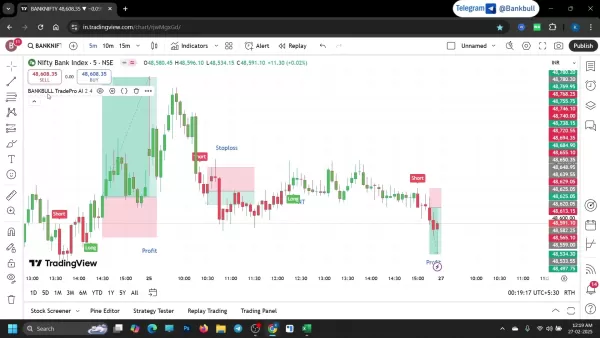 Bankbull TradePro AI Enhances Trading Accuracy with Backtesting Feature
In today's fast-paced stock trading environment, precision execution makes all the difference. This in-depth analysis examines Bankbull TradePro AI's real-world performance through rigorous backtesting - revealing how this specialized indicator enhan
Bankbull TradePro AI Enhances Trading Accuracy with Backtesting Feature
In today's fast-paced stock trading environment, precision execution makes all the difference. This in-depth analysis examines Bankbull TradePro AI's real-world performance through rigorous backtesting - revealing how this specialized indicator enhan
 "Desi Vocal: AI-Powered Voice Generator Creates Engaging Audio Content for Free"
In today's content-driven digital ecosystem, compelling audio can make all the difference. Desi Vocal revolutionizes voice-over creation with its free, AI-powered text-to-speech technology, enabling anyone to produce studio-quality narration without
"Desi Vocal: AI-Powered Voice Generator Creates Engaging Audio Content for Free"
In today's content-driven digital ecosystem, compelling audio can make all the difference. Desi Vocal revolutionizes voice-over creation with its free, AI-powered text-to-speech technology, enabling anyone to produce studio-quality narration without
 Google Relaunches AI-Powered 'Ask Photos' with Improved Speed Features
Following a temporary halt in testing, Google is relaunching its AI-driven "Ask Photos" search functionality in Google Photos with significant enhancements. Powered by Google's Gemini AI technology, this innovative feature helps users locate specific
Google Relaunches AI-Powered 'Ask Photos' with Improved Speed Features
Following a temporary halt in testing, Google is relaunching its AI-driven "Ask Photos" search functionality in Google Photos with significant enhancements. Powered by Google's Gemini AI technology, this innovative feature helps users locate specific
 August 20, 2025 at 11:01:15 PM EDT
August 20, 2025 at 11:01:15 PM EDT
Whoa, bringing back dire wolves sounds like something straight out of a sci-fi flick! 🐺 I’m kinda torn—super cool to see ancient creatures return, but are we sure we can handle them roaming around? What’s next, Jurassic Park vibes?


 0
0
 April 26, 2025 at 6:08:54 AM EDT
April 26, 2025 at 6:08:54 AM EDT
멸종한 디어 울프가 부활하다니, 믿기지 않아! 콜로설 바이오사이언스가 해냈네. 자연에 미칠 영향이 걱정되지만, 정말 멋진 일이야. 다음에 어떤 생물이 부활할지 기대돼! 🐺🌿


 0
0
 April 25, 2025 at 9:41:15 PM EDT
April 25, 2025 at 9:41:15 PM EDT
Bringing back the dire wolf? That's wild! Colossal Biosciences really did it, huh? I'm excited but also a bit scared about what this means for nature. Still, it's amazing to think we could see these creatures again. Can't wait to see what they bring back next! 🐺🌿


 0
0
 April 25, 2025 at 7:37:08 PM EDT
April 25, 2025 at 7:37:08 PM EDT
डायर वुल्फ को वापस लाना? यह तो पागलपन है! मैं बहुत उत्साहित हूँ लेकिन थोड़ा संदेह भी है। यह किसी साइंस फिक्शन फिल्म जैसा लगता है। आशा है कि वे इसे नियंत्रण में रख सकें और यह जुरासिक पार्क जैसी स्थिति न बन जाए। 🦴


 0
0
 April 25, 2025 at 2:49:32 PM EDT
April 25, 2025 at 2:49:32 PM EDT
디레울프를 부활시키다니, 정말 대단해! 신나지만 조금 회의적이야. SF 영화 같아. 주라기 공원 같은 상황이 되지 않도록 잘 관리했으면 좋겠어. 🦴


 0
0
 April 25, 2025 at 8:10:54 AM EDT
April 25, 2025 at 8:10:54 AM EDT
डायर वुल्फ को वापस लाना? यह तो बहुत ही वाहियात है! कोलोसल बायोसाइंसेज ने वाकई में यह किया है? मैं उत्साहित हूँ लेकिन प्रकृति पर इसका क्या असर होगा इससे भी थोड़ा डर रहा हूँ। फिर भी, इन जीवों को फिर से देखने की सोच ही अद्भुत है। अगली बार वे क्या वापस लाएंगे, इसका इंतजार नहीं कर सकता! 🐺🌿


 0
0

